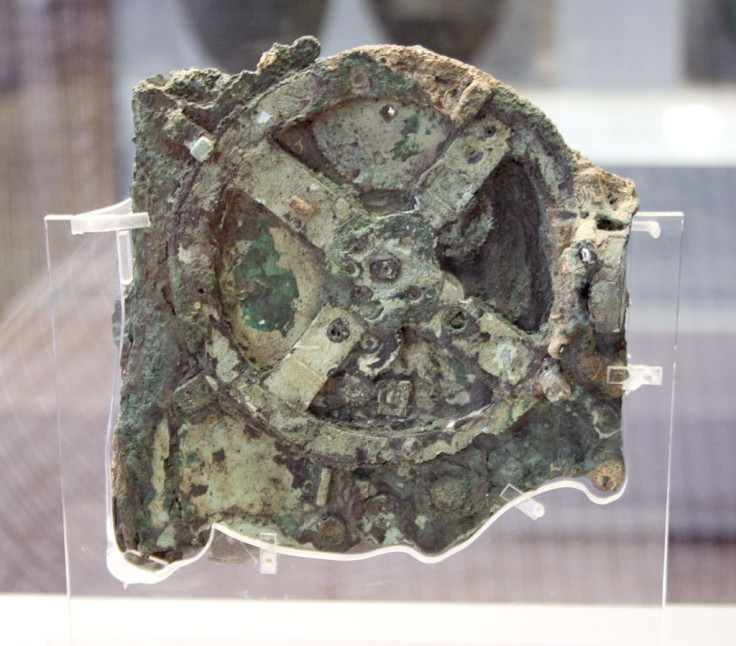Antikythera Mechanism: Hunt On for the World's Oldest Computer

Archaeologists have begun a month long mission to discover missing parts of the world's oldest known computer, the Antikythera mechanism, which was lost in a shipwreck around 60BC.
The Antikythera Mechanism Research Project is a partnership of international academics who want to uncover the rest of the ground-breaking device and the mysteries that it holds.
The Antikythera Mechanism is the oldest known gear mechanism and is sometimes referred to as the first known analogue computer. It appears to have been designed to make astronomical predictions such as the occurrence of eclipses.
Some researchers also believe that it was possibly used to determine which would be the next city to host the Olympic Games.
The device is so advanced and complex that other machines of this type were not seen again until the 14th Century, when mechanical astronomical clocks were being built in Western Europe.
Also, the quality of the workmanship on the Antikythera Mechanism is so advanced that it suggests there are ones which came before it.
Discovery
The device was first found in 1901 by local sponge divers, as part of a shipwreck off of the coast of Antikythera, a Greek island in the Aegean Sea.
Since then, 82 bronze fragments have been discovered amongst a host of other valuable artefacts, such as jewellery, coins, ceramics, glassware, and marble and bronze statues.
For much of the 20th Century it was believed that the parts found made up a clock or an astrolabe (a historical navigation device).
However, after years of study, Michael Wright, Curator of the Science Museum in London, discovered that the corroded metal gears were part of a portable, hand-cranked, computing mechanism which could predict the positions and paths of planets.
Upon taking up the challenge of building replica parts and reassembling the device, Wright found that one of the cogs did not match the rest. The part did not fit in with the others and it appeared to be made of a different alloy and by a different workmanship.
"It's not easy to find a place for one piece, Fragment D," he told New Scientist. "It's also slightly different in workmanship and has a slightly different colour."
This has led researchers to believe that there could be another computer out there, and in their search for more parts to the original device they hope to uncover the existence of another one.
As much of the device is still missing, the other theory is that this was a ship of scrap metal going to be melted down. Bronze was very commonly recycled and it is possible that there is no more of the computer down there, just an assortment of parts.
"They reckon they've got half of it," Dr James Hunter, a research fellow with the South Australian Maritime Museum, told news.com.au. "That would seem to suggest that the other half has to be down there somewhere ... either that or the cargo may have been scrap!"
"I'd prefer to believe that the ship was carrying an intact cargo of luxury goods and personal belongings, but it's important to keep an open mind and not rule out other, more mundane possibilities."
The wreck has been visited many times over the years. The original sponge divers were only able to go down to a depth of 75 metres for a few minutes and at great cost, with some becoming paralysed and one dying.
Jaques Cousteau, the famous deep-sea explorer, conservationist and filmmaker, went down to explore the wreck in 1953 and 1976 with basic equipment and managed to pull up an extensive amount of artefacts.
It is thought that the main body of the ship is still to be explored and there is also a second wreck nearby which hasn't yet been touched.
A recent survey of the area uncovered a 10m by 50m area of the seabed which still holds artefacts.
With the help of a $1.7m (£1m) Exosuit, divers will be able to go down to depths of 300m and be there for more than 5 hours.
Even though the suit is only on loan to the archaeologists for one week, it is still an invaluable piece of equipment for them.
"The exosuit has the advantage of actually having an archaeologist there on site. When you're dealing with sites remotely, it's sometimes difficult to gauge what's happening when you're looking through a tiny monitor," says Hunter. "If you've got someone who's actually there, they've got a fair degree of visibility through the helmet and they're looking directly at what they're dealing with in real-time. That's ideal."
© Copyright IBTimes 2025. All rights reserved.





















